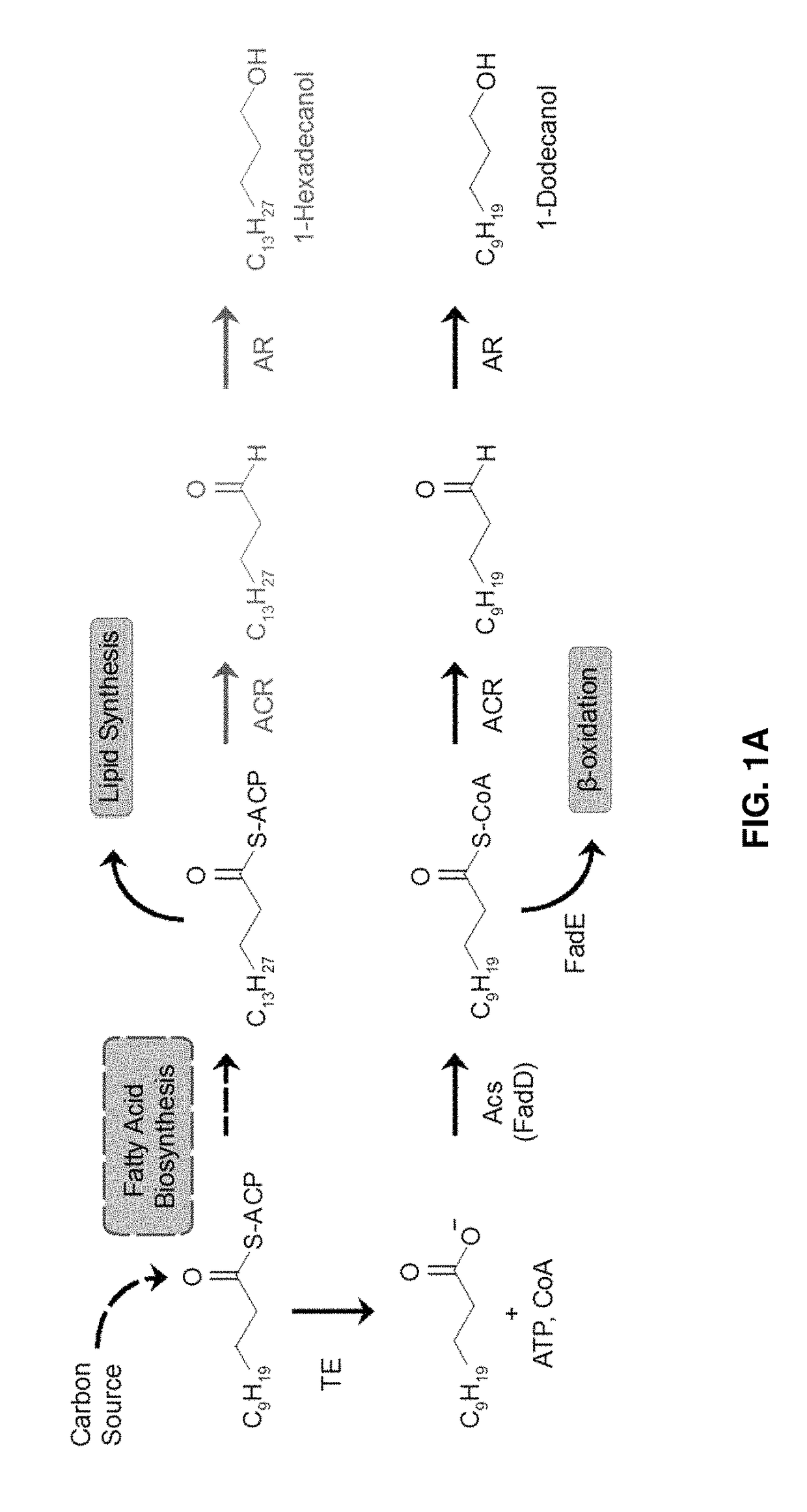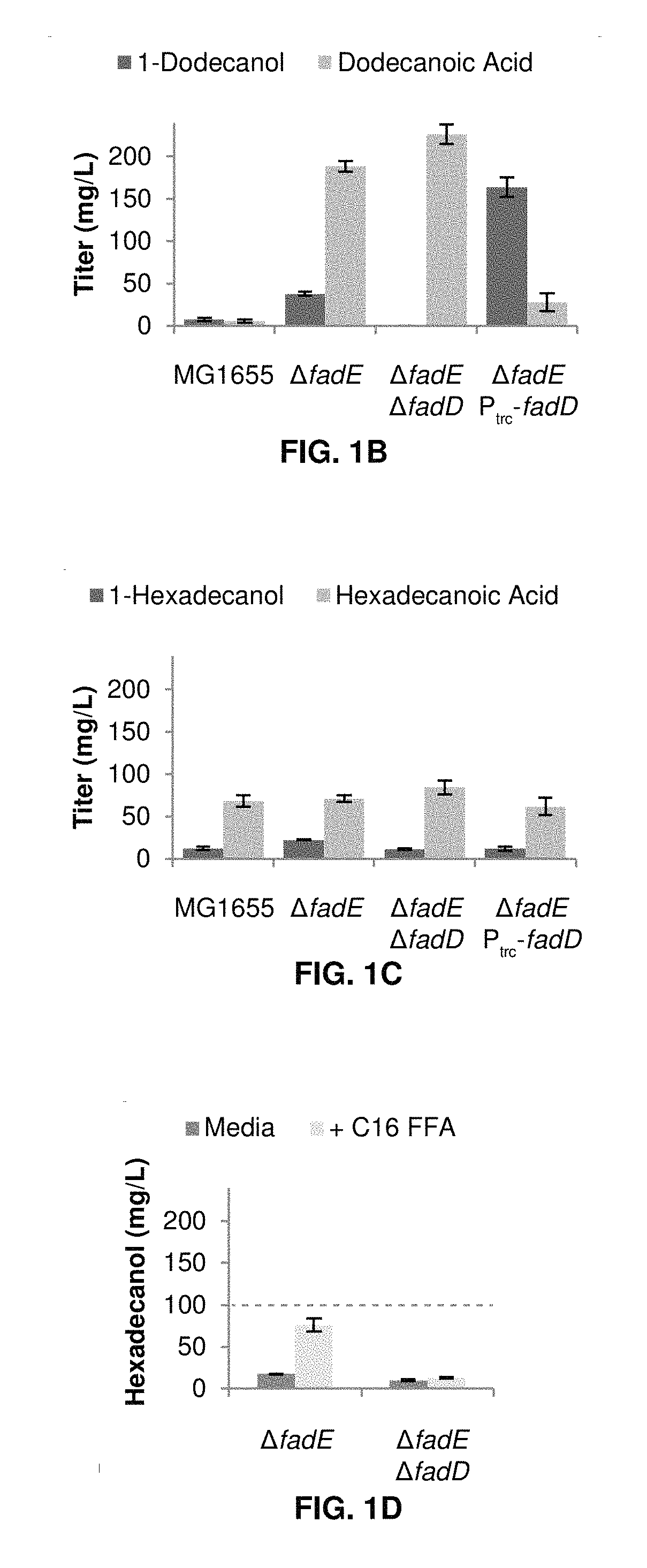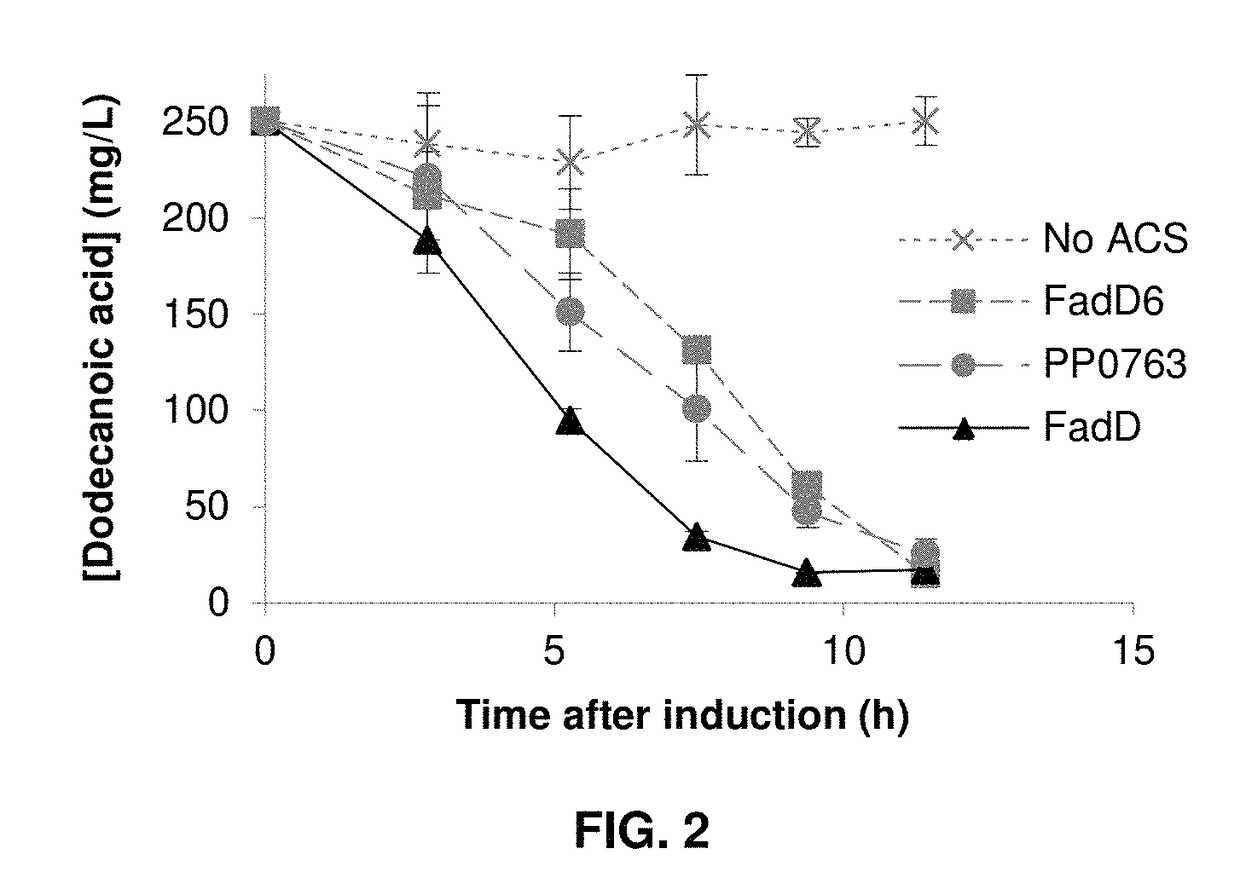Cells and methods for producing fatty alcohols
a cell and fatty alcohol technology, applied in the direction of lyase, transferase, ligase, etc., can solve the problems of no significant improvement in yield and titer to 450
- Summary
- Abstract
- Description
- Claims
- Application Information
AI Technical Summary
Benefits of technology
Problems solved by technology
Method used
Image
Examples
examples
Summary
[0137]The following examples demonstrate an exemplary metabolic engineering strategy for producing fatty alcohols from glucose. To produce a high level of 1-dodecanol and 1-tetradecanol, an acyl-ACP thioesterase (BTE), an acyl-CoA synthetase (acyl-CoA ligase, FadD), and an acyl-CoA / aldehyde reductase (MAACR) were overexpressed in an engineered strain of Escherichia coli. Yields were improved by balancing expression levels of each gene, using a fed-batch cultivation strategy, and adding a solvent to the culture for extracting the product from cells. Using these strategies, a titer of over 1.6 g / L fatty alcohol with a yield of over 0.13 g fatty alcohol / g carbon source was achieved.
Materials and Methods
Bacterial Strains and Chromosome Engineering
[0138]All bacterial strains used in this study are listed in Table 1. Single gene deletions were transferred P1 transduction of phage lysates from the collection of single gene knockouts from the National BioResource Project (NIG, Japan)...
PUM
| Property | Measurement | Unit |
|---|---|---|
| Fraction | aaaaa | aaaaa |
| Density | aaaaa | aaaaa |
| Level | aaaaa | aaaaa |
Abstract
Description
Claims
Application Information
 Login to View More
Login to View More - R&D
- Intellectual Property
- Life Sciences
- Materials
- Tech Scout
- Unparalleled Data Quality
- Higher Quality Content
- 60% Fewer Hallucinations
Browse by: Latest US Patents, China's latest patents, Technical Efficacy Thesaurus, Application Domain, Technology Topic, Popular Technical Reports.
© 2025 PatSnap. All rights reserved.Legal|Privacy policy|Modern Slavery Act Transparency Statement|Sitemap|About US| Contact US: help@patsnap.com



